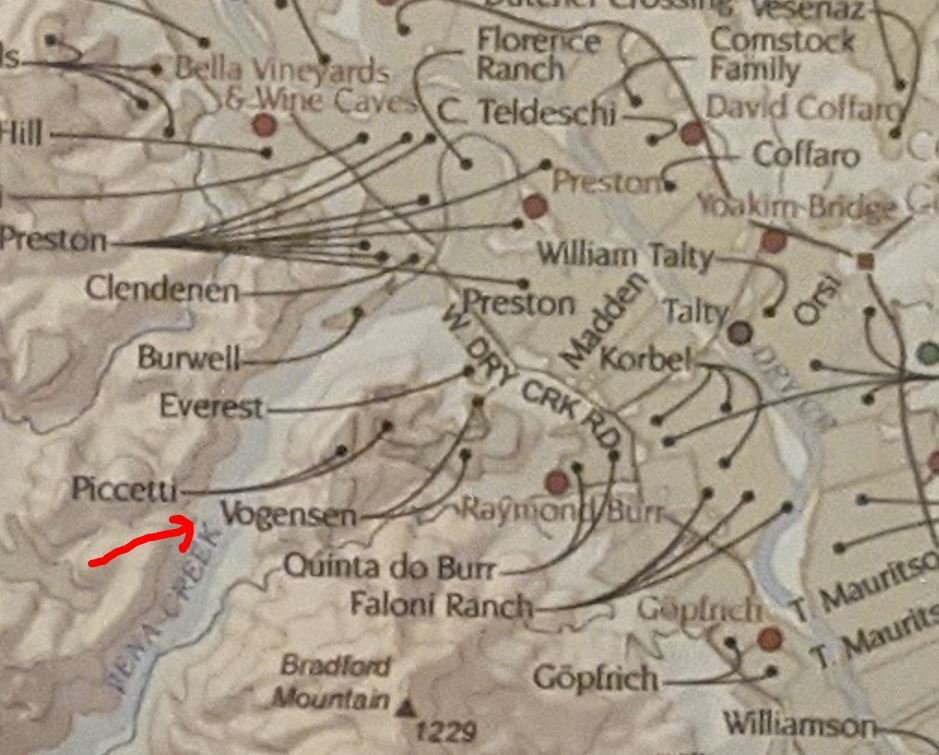Drew,
The Vogensen vineyard is west of West Dry Creek Rd, south of Preston winery.

Comparing that 2007 SCGGA map with google maps, all the vineyards in that “Vogensen” location appear to be trellised in the google maps view. The only ones that appear to be head pruned are north of there just to the west of the old house at 9101 W Dry Creek Rd. The 1998 SCGGA map shows the Vogensen vineyard in the same location as the 2007 map above.
Regarding the Winberrie vineyard, I suspect (but don’t know for sure) that Hartford didn’t make any Winberrie in 2020. I’m picking up my bottle of 2019 Winberrie there in a couple of weeks. I’ll ask them about the status of their 2020s. If I remember correctly, they said they didn’t make much 2020 wine.